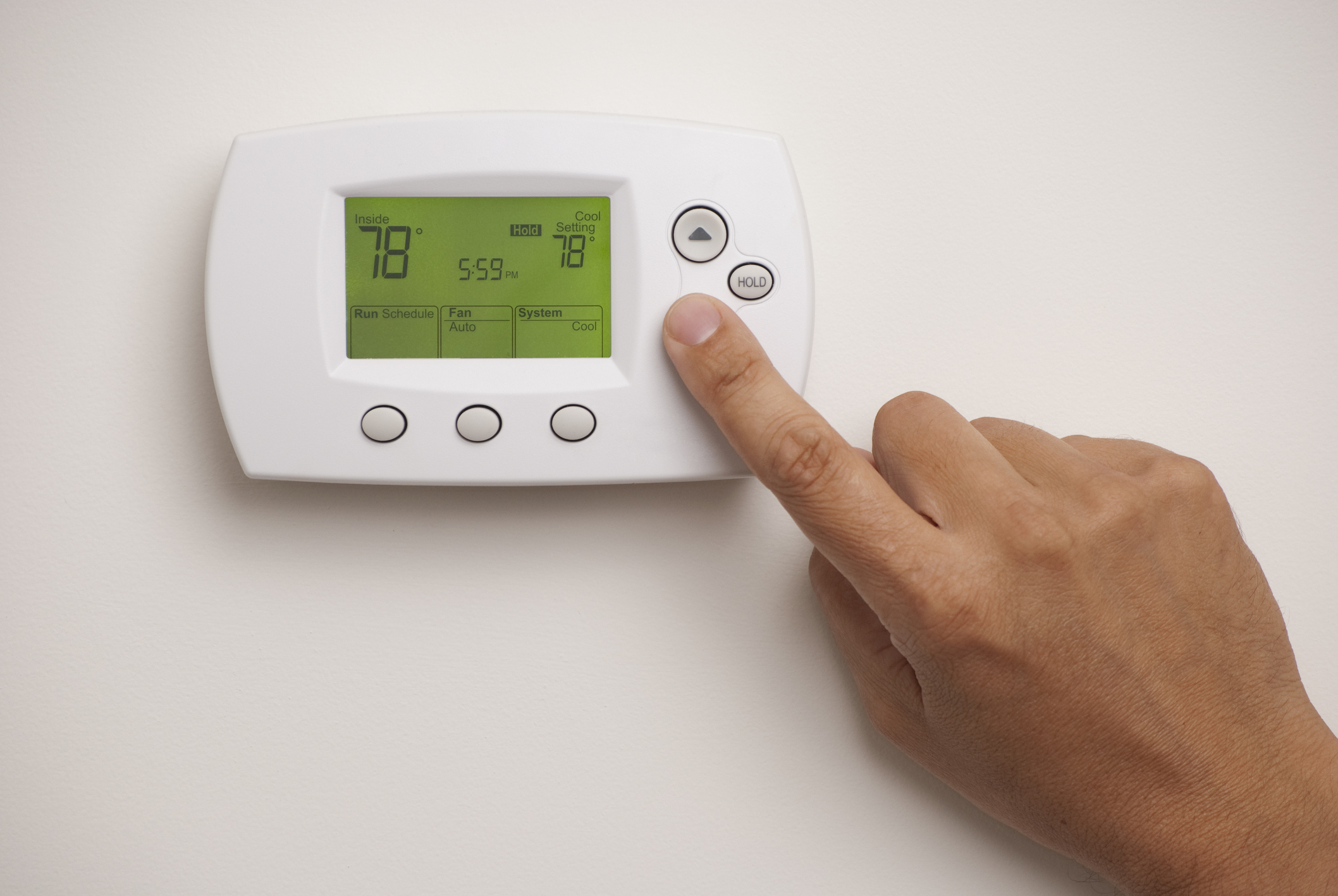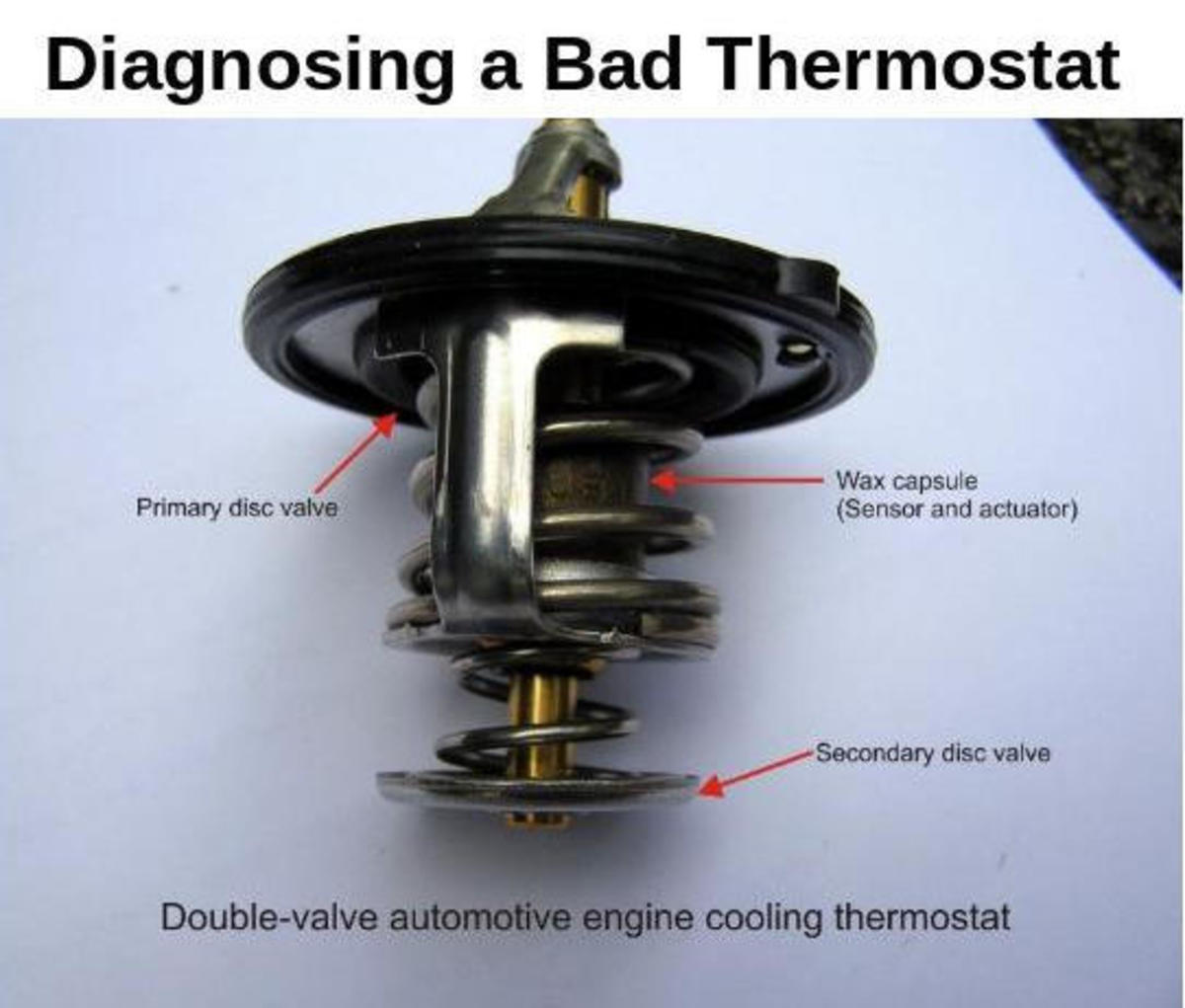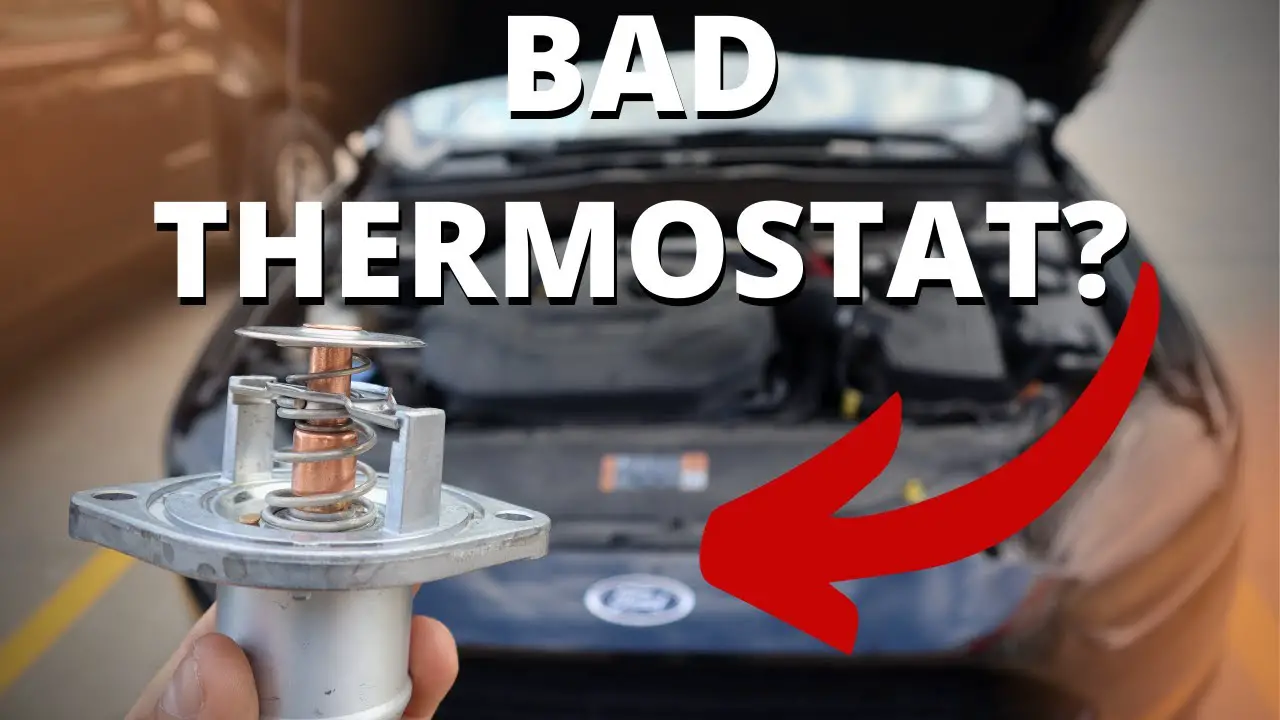Check Best Thermostat Pricing in Amazon
** As an Amazon Associate, I earn from qualifying purchases.
Is your home colder or warmer than usual? Your thermostat might be to blame.
It’s a small device, but it has a big job. Thermostats control your home’s temperature. They keep it cozy in winter and cool in summer. A faulty thermostat means discomfort. You may also see higher energy bills. But how do you know if it’s bad?
This blog will help you figure it out. We’ll look at common signs of a failing thermostat. By the end, you’ll know what to watch for. Stay tuned to keep your home comfortable year-round!
Common Thermostat Issues
Thermostats play a vital role in maintaining your home’s comfort. But they can develop issues that may affect their performance. Understanding common thermostat issues can help you identify if your thermostat is bad. This section will discuss unresponsive controls and inaccurate temperature readings.
Unresponsive Controls
Unresponsive controls are a clear sign of a thermostat problem. You press buttons but nothing happens. The screen might be blank or frozen. This can be frustrating. It could be due to dead batteries. Or a more serious internal issue. Always check the batteries first. If changing them doesn’t help, you may need a new thermostat.
Inaccurate Temperature Readings
Inaccurate temperature readings can cause discomfort. Your thermostat says it’s 70°F, but it feels like 60°F. This discrepancy can lead to high energy bills. It might be due to a miscalibrated thermostat. Or the thermostat is placed in a poor location. Direct sunlight or drafts can affect readings. Ensure your thermostat is in a central location. Away from heat sources or windows. If problems persist, consider replacing it.

Credit: www.youtube.com
Signs Of A Faulty Thermostat
A thermostat plays a crucial role in regulating your home’s temperature. But sometimes, it can start to malfunction. Recognizing the signs of a faulty thermostat can save you time and discomfort. Here are some common indicators that your thermostat might be bad.
Hvac System Short Cycling
Short cycling is a clear sign of thermostat issues. Your HVAC system turns on and off rapidly. This can lead to higher energy bills and more wear on the system. The constant starting and stopping can cause long-term damage. If you notice this, check your thermostat first.
Sudden Temperature Fluctuations
Sudden changes in temperature can point to a faulty thermostat. You might feel warm one moment and cold the next. This inconsistency makes it hard to stay comfortable. A malfunctioning thermostat struggles to maintain the set temperature. This can lead to an uneven climate in your home.
How To Test Your Thermostat
Testing your thermostat is essential to see if it’s working properly. Check if the display turns on and adjust the temperature settings. If your heating or cooling system doesn’t respond, your thermostat might be bad.
Testing your thermostat can save you from a lot of headaches and potentially costly repairs. Knowing how to test it correctly is crucial for maintaining a comfortable home environment. In this section, we’ll look at two practical methods: using a thermometer and checking for power. Both are simple but effective ways to determine if your thermostat is working as it should.Using A Thermometer
A quick and easy way to test your thermostat is with a thermometer. Place a thermometer near your thermostat and compare the readings. Make sure the thermometer is at the same height and not in direct sunlight. Wait about 15 minutes for the thermometer to stabilize. If the temperature on the thermometer matches the thermostat reading, your thermostat is likely working fine. If there’s a significant difference, your thermostat might be faulty.Checking For Power
Another important step is to check if your thermostat is receiving power. Sometimes, it might be a simple issue like a tripped breaker or a dead battery. First, inspect your circuit breaker. Ensure the breaker for your HVAC system is in the “on” position. If it’s tripped, reset it and see if that resolves the issue. Next, check the thermostat’s batteries. If you have a battery-powered thermostat, replace the batteries and see if it starts functioning properly. Lastly, look at the wiring. Ensure all wires are securely connected to the correct terminals. Loose or corroded wires can cause your thermostat to malfunction. Testing your thermostat doesn’t have to be complicated. These simple steps can help you quickly determine if your thermostat is the root of your heating or cooling issues. If you find it’s not working, you can then decide whether to repair or replace it.
Credit: www.gopreferred.com
When To Replace Your Thermostat
Knowing when to replace your thermostat can save you from discomfort. A malfunctioning thermostat can lead to inconsistent temperatures. This affects your comfort and increases your energy bills. Let’s explore the signs that it might be time for a replacement.
Age Of The Thermostat
Thermostats have a limited lifespan. If your thermostat is over 10 years old, it may be time to replace it. Older models can wear out and become less accurate. Newer models offer better energy efficiency and advanced features. Replacing an old thermostat can improve your home’s comfort and save money.
Frequent Repairs
Frequent repairs are a clear sign of a failing thermostat. Constantly fixing issues can become costly and inconvenient. If you find yourself calling a technician often, consider a new thermostat. A new unit can provide reliable performance and peace of mind. It can also reduce the need for constant maintenance.
Diy Troubleshooting Tips
Experiencing issues with your thermostat can be frustrating. Before calling in a professional, try some simple DIY troubleshooting tips. These steps can help identify if your thermostat is the problem. Follow these easy tips to see if you can fix the issue yourself.
Resetting The Thermostat
Resetting the thermostat is a good first step. Turn off your HVAC system. Next, remove the thermostat from the wall. Look for a reset button or switch. Press the reset button, or toggle the switch. Wait a few minutes before turning the system back on. This simple step often resolves common issues.
Cleaning The Thermostat
Dirt and dust can affect your thermostat’s performance. Start by removing the cover. Use a soft brush or cloth to gently clean inside. Pay attention to the contacts and sensors. Avoid using water or liquid cleaners. Reattach the cover and test your thermostat. A clean thermostat can work more efficiently.

Credit: discover.hubpages.com
Professional Help
Sometimes, a malfunctioning thermostat needs professional attention. Knowing when to seek help can save you time and money. Let’s explore the signs that indicate you should call an HVAC technician and the potential cost of professional services.
When To Call An Hvac Technician
If your thermostat displays incorrect temperatures, it might need a professional touch. Persistent issues, even after troubleshooting, also signal the need for expert help. Unresponsive thermostats or unexplained spikes in your energy bill are clear indicators. Professional technicians can diagnose and fix underlying problems.
Check Best Thermostat Pricing in Amazon
** As an Amazon Associate, I earn from qualifying purchases.
Cost Of Professional Services
The cost of hiring an HVAC technician can vary. On average, expect to pay between $75 and $200 for thermostat repair. If a replacement is necessary, the cost can range from $100 to $300, depending on the model. Remember, investing in professional help ensures your thermostat functions efficiently.
Types Of Thermostats
Choosing the right thermostat for your home is essential. It helps regulate temperature and save energy. There are various types of thermostats available in the market. Each type has its own features and benefits. Understanding these can help you determine if your thermostat is bad or malfunctioning.
Digital Vs Analog
Digital thermostats are modern and precise. They use electronic sensors to control temperature. These thermostats often have a digital display. This makes it easy to read and adjust settings. They can also offer advanced features like programmable schedules.
Analog thermostats are older and simpler. They use mechanical parts to control temperature. These thermostats often have a dial or a lever. While they are easy to use, they can be less accurate. They may not offer advanced features like digital ones.
Smart Thermostats
Smart thermostats are the latest innovation. They connect to your home Wi-Fi. You can control them using your smartphone or computer. These thermostats learn your habits and adjust settings automatically. This helps save energy and maintain comfort.
Many smart thermostats offer additional features. For example, voice control, energy usage reports, and integration with other smart home devices. They are ideal for tech-savvy users. If you have a smart thermostat and notice issues, it might be time for a check-up or replacement.
Preventive Maintenance
Taking care of your thermostat can save you from inconvenient breakdowns and costly repairs. Regular preventive maintenance can keep your thermostat functioning smoothly and extend its lifespan. It’s easier than you might think, and you don’t need to be a technical expert.
regularly Scheduled Checks
Set a reminder to check your thermostat every few months. Ensure it’s working correctly and accurately reflecting the temperature. Compare the thermostat reading with a separate, reliable thermometer.
Look out for sudden temperature swings or if your HVAC system runs continuously. These could signal a problem with the thermostat. Regular checks can help you catch these issues early.
I once noticed my heating system running non-stop. A quick check revealed the thermostat was misreading the room temperature. Catching it early saved me from a hefty energy bill and a chilly home.
keeping Thermostat Clean
A clean thermostat operates more efficiently. Dust and debris can affect its sensors. Gently clean the surface and around the buttons with a soft cloth.
Use a can of compressed air to remove dust inside the unit. Make sure the power is off before you open the thermostat to clean it. Regular cleaning can prevent malfunctions and improve accuracy.
Have you ever noticed your thermostat’s display flickering or acting erratically? Dust buildup might be the culprit. Keeping it clean can prevent these annoying issues.
Preventive maintenance is not just about avoiding problems. It’s also about ensuring your thermostat works when you need it most. Why wait for a breakdown when a little care can keep your home comfortable year-round?
Frequently Asked Questions
How Do I Test If My Thermostat Is Bad?
To test if your thermostat is bad, set it to a high temperature. Check if the furnace or cooling system activates. If not, use a multimeter to test for continuity. If there’s no continuity, the thermostat may be faulty.
How Do I Know If My Thermostat Needs Replacing?
Your thermostat may need replacing if it shows inaccurate readings, frequent temperature fluctuations, or won’t respond to settings.
What Are The Common Symptoms Of A Thermostat With Has Failed?
A failed thermostat may cause overheating, erratic temperature changes, or no heat at all. The engine might run hot or cold.
Is It My Thermostat Or My Furnace?
It could be either. Check if the thermostat has power and settings are correct. If it’s fine, the issue might be the furnace.
Conclusion
A bad thermostat can cause many issues. It affects your comfort and energy bills. Check for signs like incorrect temperatures or constant adjustments. Listen for odd noises and watch for unresponsive settings. Replace faulty thermostats promptly to maintain a comfortable home.
Regular maintenance can prevent problems and save money. Stay alert to these signs to keep your system efficient. A well-functioning thermostat ensures a cozy environment. Don’t overlook its importance for a smooth-running HVAC system. Take action if you suspect issues to enjoy a reliable climate control.
Check Best Thermostat Pricing in Amazon
** As an Amazon Associate, I earn from qualifying purchases.


